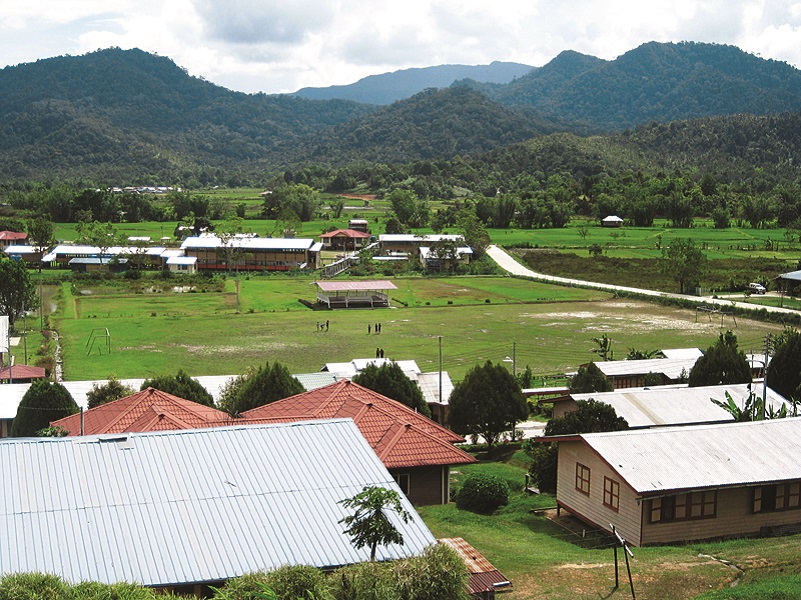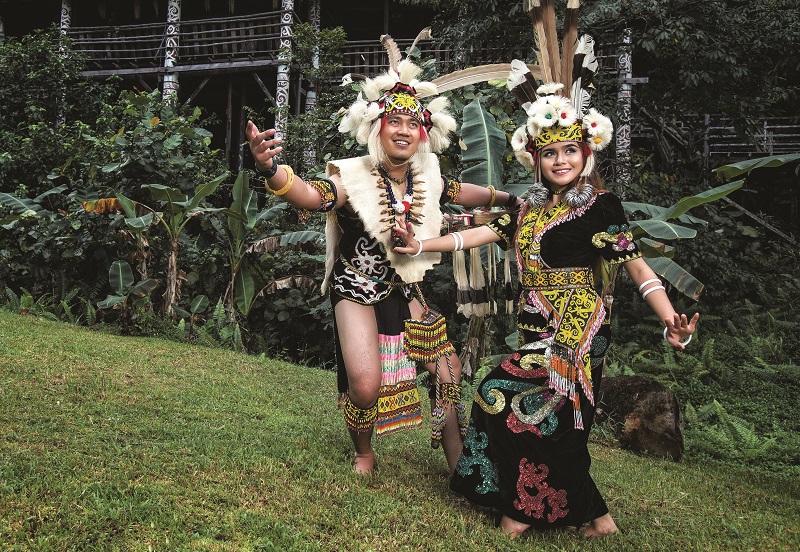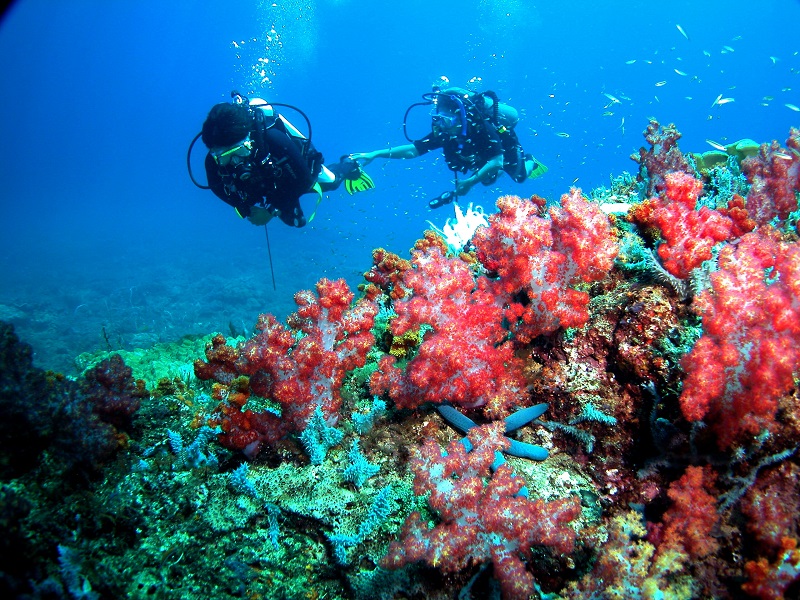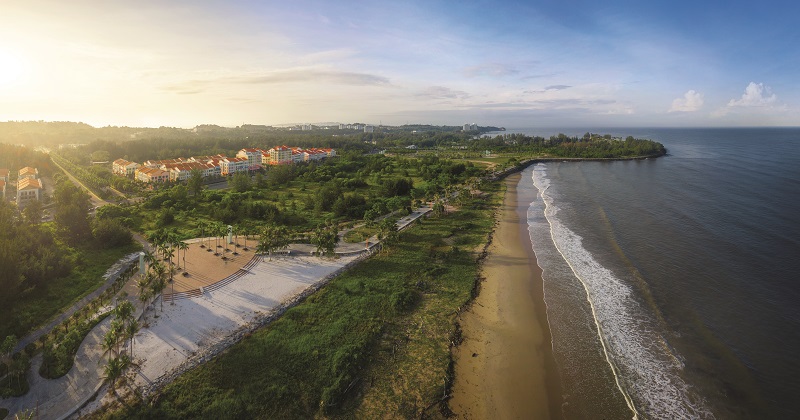
A two-hour drive from Miri takes us to Niah National Park, home to the limestone caves and an archeological site where 40,000-year-old human remains were discovered (All photos: Sarawak Tourism)
6-bario-01.jpg

If your timing and itinerary permits, a visit to Bario allows one to witness first-hand the origins of the popular rice and salt hailing from its highlands. But if you are strapped for time as I was, Miri’s Tamu Muhibbah market offers a crash course into some staple ingredients used in the local cuisine. One can find terung dayak — an orange-yellow Borneoan brinjal that is added to a deliciously sour soup cooked with pork, as well as isip leaves that serve as a wrapping for a dish of mashed rice called nuba laya, at The Summit Cafe, a restaurant not far from Tamu Muhibbah that serves a wide variety of Kelabit food. There are many eateries like this in town — which is also known for its seafood — serving up local cuisine with a homemade touch at a fair price.
Other dishes to look out for at this café is pounded daun ubi (tapioca leaves) and shredded pork or fish, all of which go remarkably well with the smooth texture of nuba laya, which accentuates the flavour from the accompanying dishes. The market operates till early evening but late at night, past dinner time, vendors from nearby villages travel here to sell their produce by the roadside either directly to customers or to vendors who will resell them in the market the following day.
Nurturing Nature
A trip to Miri, where six out of Sarawak’s 30 national parks are located, would not be complete without immersing oneself in its natural surroundings and embarking upon some nature trails and activities. “We want to promote Sarawak in its natural pristine form ... In the long run, nature is our most valuable asset and people have come to appreciate natural treasures, which, once destroyed, can never be rebuilt. You cannot build another Niah [Caves],” says Lee, a proud Mirian.
As part of the state’s efforts to protect and preserve its environment, the Sarawak Forestry Corp (SFC) has deployed 1,750 artificial reef balls in Miri-Sibuti Coral Reefs National Park, of which the final batch of 600 balls was released in March this year. This was part of an eco-marine project, the BEACON project, implemented by the SFC in collaboration with Petronas.
orangulu.jpg

If you find yourself having to pick only one nature-driven experience, Niah Caves tops the list of must-sees. A two-hour drive from Miri takes us to Niah National Park, home to the limestone caves and an archeological site where 40,000-year-old human remains were discovered. The museum, which provides visitors with an overview of the caves and their history, is located 3km away from the first one that we arrive at, called Trader’s Cave. As its name suggests, people from around the world would pay a visit to trade wares for the bird’s nest gathered by locals. Bird’s nest is still collected in these caves and the long poles attached to their ceiling — each belonging to a particular family, my guide tells me — are testament to this. During my visit, the caves were closed to collectors for six months to allow for the natural cycle of nesting and regeneration to take place.
From the entrance of Trader’s Cave, a trail leads into the Traders’ Chamber, where one can find the remains of the wooden structures that were once traders’ outposts. Not far from here is the breathtaking main cave, which is covered in age-old stalactite and stalagmite formations. It takes a good hour to properly explore both caves, beyond which lies the Painting Cave, which houses ancient paintings by the cave’s original occupants.
Other than in the areas with openings that allow sunlight to stream through, there is minimal lighting in the cave — a deliberate move, according to Yii, to preserve its micro-ecosystem. Some areas are completely devoid of light, save for our torches and the walkway that connects the main cave and the Painting Cave. This is also the quietest and coolest section of the cave, owing to the wind blowing from wall-to-wall with only the occasional sounds of bats and swiftlets breaking the silence.
It was raining on our trek down but the trees — nature’s canopy — sheltered us from getting thoroughly drenched as we took on the same trail. But we savoured different sights, smells and sounds of the rainforest, thanks to the downpour.
On the way back to town, Tusan beach, which is an hour’s drive from Niah Caves offers a different, rawer, environment to enjoy a beautiful Miri sunset as compared with Coco Cabana, a lifestyle and leisure centre in Marina Bay, although both are equally captivating.
‘Sarawak: More to Discover’
Miri is also the chosen venue for a multitude of international festivals and competitions. For example, next year marks the 13th Miri City International Deep-sea Fishing Tournament and at the end of this year, Eastwood Valley Golf & Country Club will be hosting the Miri International Dance Championship. Sarawak’s International Kite Festival was also held here last year.
dscn1591.jpg

The majority of international tourists who visit Miri hail from Brunei, India, China and Singapore. Bruneians are the biggest weekend spenders in Miri and a survey by Universiti Brunei Darussalam showed that the average Brunei traveller spends anywhere between US$100 and US$500 in a single trip.
According to assistant minister Lee, the city that is home to Curtin University’s largest international campus and three major hospitals welcomes education-driven and medico-tourism. The latest tourism campaign “Sarawak: More to Discover” hopes to introduce all these and more.
Sometimes, we tend to overlook the beautiful destinations in our own backyard, and after spending three days in Miri, I left feeling that way and that there was indeed so much more to this coastal city waiting to be discovered.
ParkCity’s diversification of Miri
Nestled between the coast and Miri’s central business district is Marina Park City (MPC), developed, owned and run by Pantai Bayu Sdn Bhd. Modern and new, it exudes a familiar self-contained, integrated living model that is characteristic of the ParKCity group, which Pantai Bayu Sdn Bhd is a member of. Another development by this group is Eastwood Valley Golf & Country Club that boasts a golf academy.
With the South China Sea on one side and Canada Hill on the other, Miri experienced land shortages for its expansion in the 1990s in addition to continuous erosion of its coast by tidal waves, moving sandbars and heavy siltation of the Miri River estuary. The city found its solution to these through a joint venture between Sarawak’s Land Custody and Development Authority and Samling Group to reclaims parts of the sea, now known as MPC, and effectively expanding downtown Miri.
Transformations such as these is not something new for the group whose KL development, Desa ParkCity, was once an active quarry and has since won multiple property awards.
mpc_overall_006.jpg

Restaurants, cafés and bars make up the bulk of businesses at MPC’s Marina Square 1 and 2, near where the city council’s building is slated to be relocate soon. The latest addition to this mixed-use master plan is Miri Times Square, a 19.2-acre plot that was completed last year, it comprises offices and retail outlets as well as dining and entertainment options.
Residential options include the ultra-exclusive bungalow lots right next to the marina, which allows homeowners to be close to their yachts, small office home office units at Times Square and a soon-to-be completed serviced apartment building.
Chee tells us that despite having pursued projects such as Desa ParkCity and ParkCity Hanoi, Miri holds a special place for Samling Group’s subsidiary, which is based here and has always wanted to give back to Miri folk through its development projects.
In a way, the group has achieved this through a 15.7-acre green lung, the Miri Central Park. Every day, Mirians enjoy jogging and strolling in this public facility, which is surrounded by tree-lined streets — an example of the many green connectors that weave through the city, encouraging people to walk more — and not far from the beautiful view of the sea and sunset.
This article first appeared on July 1, 2019 in The Edge Malaysia.


